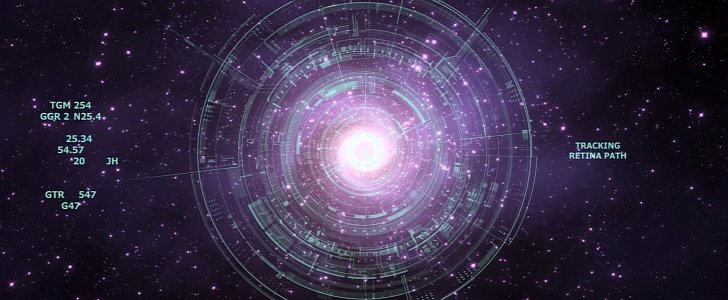Head-up displays have evolved a lot over the past few years. From simple devices that could only project limited amounts of information on a tiny surface on the windscreen, they are now veritable instrument clusters floating right before your eyes.
There's no need to explain the importance of a head-up display. Interior designers have been struggling to make dashboards as ergonomic as possible, focusing on keeping the driver's hands on the steering wheel and his eyes on the road. You want your controls to be simple, offer adequate feedback and be easily reached. That's why touchscreens aren't everybody's favorite since they fall short of letting you know whether you've hit the right command without checking it with your eyes.
A HUD will give the driver the important travel information such as the vehicle speed, navigation directions, the current speed limit and even infotainment details such as the song that's playing on the audio system. All this is possible right now, but even though the size of the head-up display area has consistently been increasing, it has reached a point where it can't grow any further based on the current technology. What's more, it's also restricted to a certain position on the windscreen which is a little too low by some standards.
Panasonic has just revealed an improved version of its invisible television set in Japan. The company has made no announcement linking the device to the automotive world, but it doesn't take much to imagine what a transparent glass that's capable of displaying Full-HD images could bring to the car industry. A windshield-wide HUD, anyone?
This technology could be coming a little too late as the cars are slowly but surely heading into the self-driving direction. With the need for a driver canceled, so is that of projecting vehicle-related information onto the windshield. But not all is lost. A window that can very quickly switch from being transparent to displaying your favorite TV show can still be quite useful in a car that can drive itself.
According to Engadget, Panasonic isn't ready just yet to put this tech on the market. The prototype TV was shown as an integral part of a furniture piece where it took turns between acting as a shelf glass or as a TV. The new version loses the dim-lit image that plagued the first iteration and looks like the kind of product some people would pay good money to own. They will have to wait, though, as the design will likely stay in the development phase for at least three more years.
A HUD will give the driver the important travel information such as the vehicle speed, navigation directions, the current speed limit and even infotainment details such as the song that's playing on the audio system. All this is possible right now, but even though the size of the head-up display area has consistently been increasing, it has reached a point where it can't grow any further based on the current technology. What's more, it's also restricted to a certain position on the windscreen which is a little too low by some standards.
Panasonic has just revealed an improved version of its invisible television set in Japan. The company has made no announcement linking the device to the automotive world, but it doesn't take much to imagine what a transparent glass that's capable of displaying Full-HD images could bring to the car industry. A windshield-wide HUD, anyone?
This technology could be coming a little too late as the cars are slowly but surely heading into the self-driving direction. With the need for a driver canceled, so is that of projecting vehicle-related information onto the windshield. But not all is lost. A window that can very quickly switch from being transparent to displaying your favorite TV show can still be quite useful in a car that can drive itself.
According to Engadget, Panasonic isn't ready just yet to put this tech on the market. The prototype TV was shown as an integral part of a furniture piece where it took turns between acting as a shelf glass or as a TV. The new version loses the dim-lit image that plagued the first iteration and looks like the kind of product some people would pay good money to own. They will have to wait, though, as the design will likely stay in the development phase for at least three more years.





